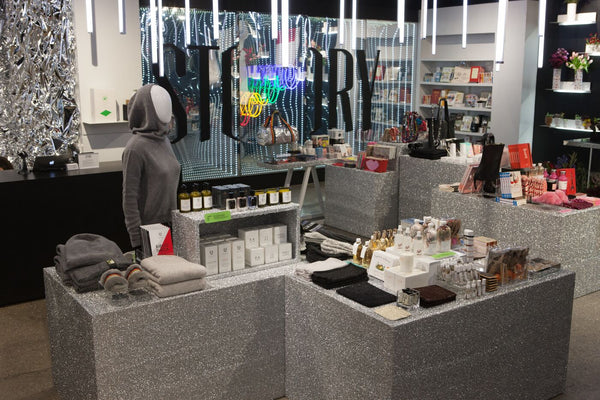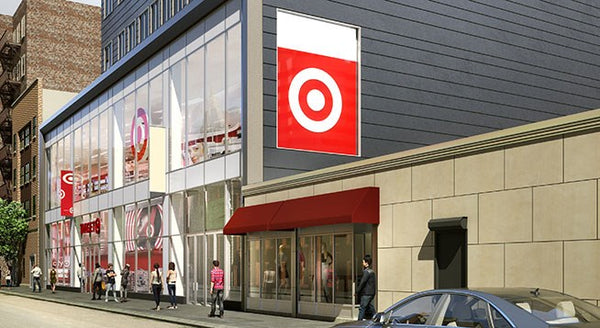Only 32% of shoppers go to stores because they enjoy the experience, while more than three-quarters avoid stores altogether. With metrics like these, it’s time for retail brands to think outside the box to improve the in-store experience.
One way to refocus your attention back to the experience of in-store shopping is through experimenting with different store formats. But experimental concept stores can do more for your brand than simply improve the customer experience. New store formats can also help you build buzz about your biz and test out new ideas.
So, which ideas are worth trying? And how do you come up with these experimental ideas? Check out these five retail brands that have tested their own concept stores to learn from their example.
Amazon
The entire retail industry was abuzz when Amazon Go opened in Seattle earlier in 2018. No cashiers, lots of high-tech, and a unique retail experience led to lines out the door (which is ironic considering shorter/no lines is a major perceived draw for their cashier-less format).
Amazon Go used RFID technology to eliminate the need for checkout counters. Customers grab their items off shelves and leave with their items. When they exit the store, sensors pick up the RFIDs on all their items and automatically charge their Amazon account.
I’m in Seattle and there is currently a line to shop at the grocery store whose entire premise is that you won’t have to wait in line. pic.twitter.com/fWr80A0ZPV
— Ryan Petersen (@typesfast) January 22, 2018
The 1,800-square-foot experimental store aimed at driving grocery sales for the major online retailer — a smart move, considering grocery shopping is mostly done in stores (more than any other vertical).
Key Takeaway
Embrace technology: Amazon’s tech-forward approach has garnered lots of attention from the press and consumers alike. The brand’s ever-innovative outlook helps Amazon stay ahead of competitors and delight customers.
Technology can enhance the customer experience, as well as provide richer data for you to analyze and understand what’s happening in-store. In-store beacons, interactive fitting rooms, and interactive fitting rooms, and mobile payments are just a few of the technologies you can incorporate into your experimental store format.
STORY
 Image: STORY
Image: STORY
New York City concept store STORY is on a mission to reinvent retail. Their concept store changes about every month. The 2,000-square-foot store “takes the point of view of a magazine, changes like a gallery and sells things like a store,” according to the company website.
Here’s how it works: STORY sells curated products from different brands. These items are selected around a common theme. Every four to six weeks, STORY reinvents itself with a new theme. Past themes include love, wellness, creativity and the holidays. What originally started as an experimental startup has turned into a permanent NYC retail concept.
Key Takeaway:
Stay fresh and relevant: By reinventing themselves on a regular basis, STORY always has something new for even the most regular customers to discover. Staying fresh keeps the store relevant year round. And promising something new is a key way to drive repeat purchases.
CVS
Drugstore and pharmacy retailer CVS has embraced outside-the-box thinking when it comes to store format. After experiencing a decline in sales, they’ve taken a new approach to the format of 800 stores.
These stores have a renewed focus on health: highlighting the health benefits of products with informative displays, expanding the selection of healthier foods, and refusing to sell products that contain harmful ingredients.
They’ve also redesigned their approach to beauty products, creating display walls dedicated to beauty promotions and promoting more fashion-forward and trendy products. Through “discovery zones” targeted at different health- and beauty-related categories.
The major retailer also has plans to enhance the mobile shopping experience, with curbside pick-up and interactive fitting rooms, and mobile pay are just options.
Key Takeaway:
Understand and adapt to the market: As consumers place more of an emphasis on health and wellness in their purchasing decisions, brands have to keep up. Nielsen reports that health attributes are increasingly important to consumers. One Vision Critical survey found that more than three-quarters of Millennial, Gen X, and Boomer consumers care about ingredients (while Gen Z came in at 60%).
CVS has recognized these changes in consumer preferences and is adapting store layouts accordingly. If you notice a major shift in your industry, consider how consumers’ beliefs are affecting their purchase behavior and how you can meet them where they’re at.
Carvana
Online used car retailer Carvana dipped its toes into the physical retail pool with an unexpected concept “store” format: a car vending machine.
Like Amazon Go, the Carvana Car Vending Machine takes the sales associates out of the experience. But the similarities pretty much end there. The car vending machine is an all-glass tower up to eight stories tall with as many as 32 cars. Customers “pay” for the car they’ve found and purchased online prior to the vending machine experience, inserting an oversized commemorative coin into the machine which then delivers the car. There are seven vending machines across the Southeastern U.S. and Texas.
Key Takeaways:
Focus on more than just sales: Carvana’s vending machines were simply for purchase fulfillment — customers couldn’t go to the vending machine, browse a car, and buy it on the spot. Instead of focusing on directly driving sales, Carvana recognized other business opportunities through this experimental retail format.
Your concept store can also do more than just drive conversions. Many times, focusing on relationship-building or brand awareness will indirectly affect sales in a positive way. Carvana’s experience is no different: The car vending machines increased brand awareness, which contributed to the brand’s triple-digit year-over-year revenue growth. You can even test new markets, as Carvana has been able to do since the vending machine is more nimble than a brick-and-mortar store.
Stay consistent with your brand: One concept Carvana hangs its hat on is that customers can buy a used car in as little as ten minutes. Keeping consistent with the convenience they promise and have become known for, the car vending machine is an extension of that. Not only are the vending machines fun, but they’re also quick and easy.
Target
 Image: Target
Image: Target
As Target expands its physical retail presence, it’s also revamping what that presence looks like with experimental store formats. The major retailer is looking to model new stores and remodel current stores to mirror a small store format. Concentrating on colleges and urban areas in particular, it’s a move to appeal to younger shoppers.
These stores are localized, and aim to provide budget-friendly convenience. Online order pick-up, self-checkout, grab-and-go options, and layouts that provide customers with what they need, quickly and easily, Target wants to make the process more streamlined and painless.
Key Takeaways:
Understand your customer: It's important to get inside the head of your target customer so that you understand their needs. Half of consumers are willing to switch brands if a company doesn’t anticipate their needs. So, ensure your customers stay loyal by understanding and offering the products and services that will meet their needs.
Keep an eye on your competition: It’s no secret that Target’s biggest competitor is Walmart. And after seeing major growth in the ecommerce space, Walmart has been on a path to success. Knowing this, and identifying a gap in physical retail presence for Walmart, Target quite literally took to the streets of New York City and bolstered its presence.
This will help Target stay competitive and differentiate themselves from Walmart. For your own retail business, make sure you’re checking in with your competitors. See what’s working for them and examine which opportunities they’re not exploring to design a concept store plan that will work for you.
Read more
- The Secret to Telling Your Brand's Story With Immersive Retail Design
- Why Your Store Needs a Size Chart (And How to Create One)
- Slow Shopping: Why Retailers Should Focus on Discoverability In-Store
- Let There Be Light: Retail Lighting Designs to Encourage Sales
- Showrooming and Webrooming: How They Can Help Your Business Grow
- 10 Visual Merchandising Tips for Increasing Event Sales
Store Format FAQ
What is an example of store format?
What defines a store format?
What are the 4 types of store based retail?
- Department stores
- Specialty stores
- Supermarkets and grocery stores
- Discount stores





